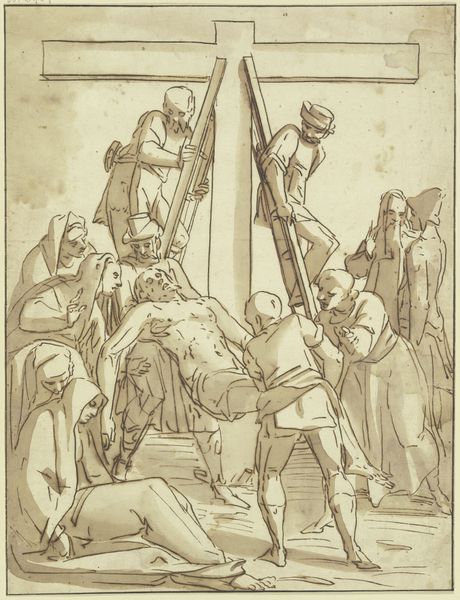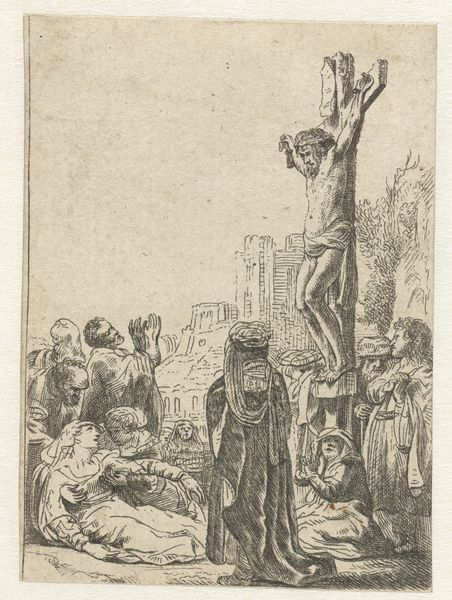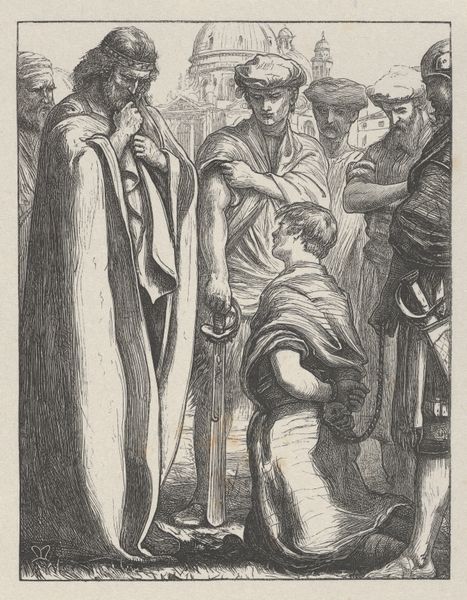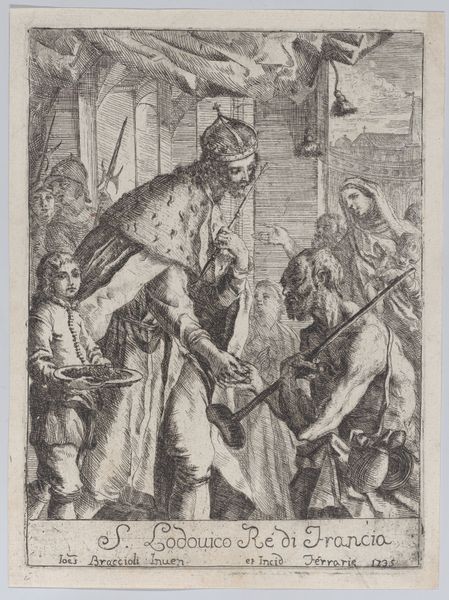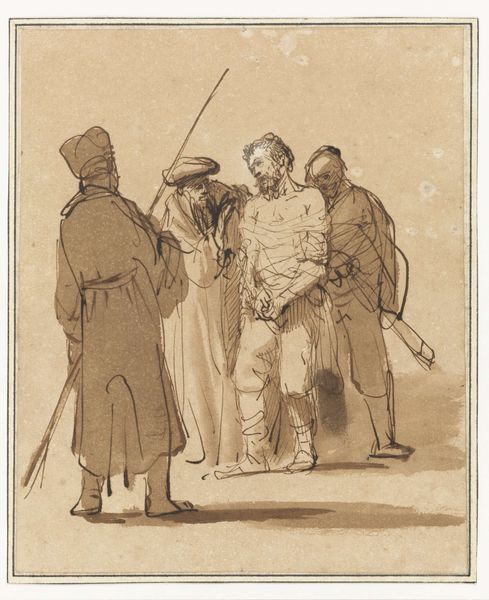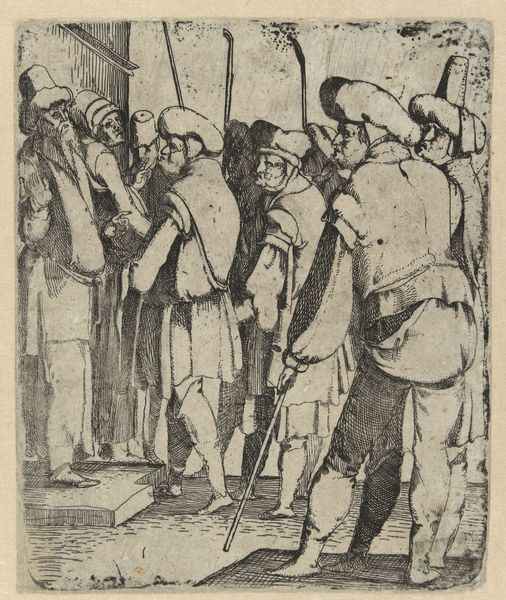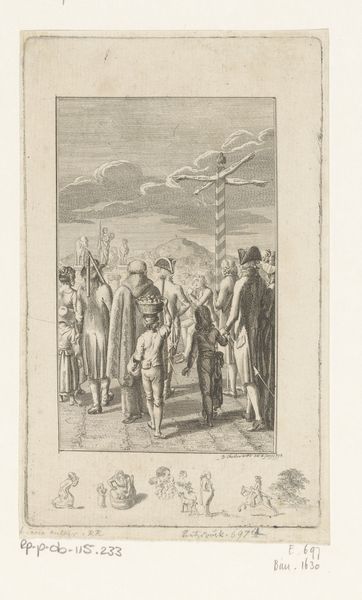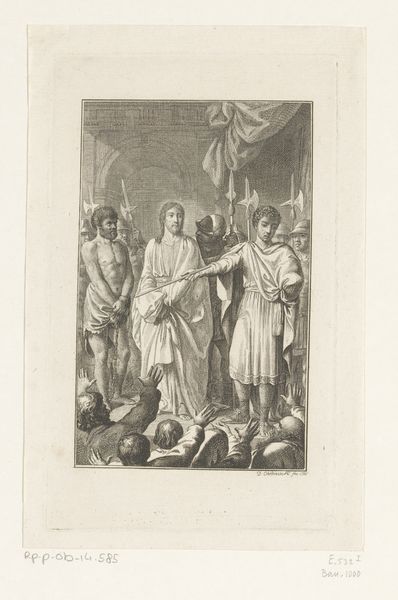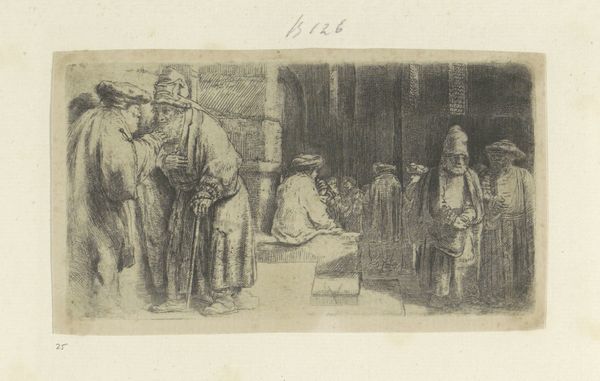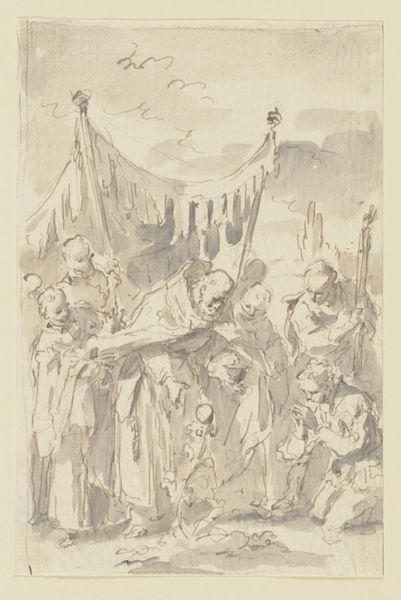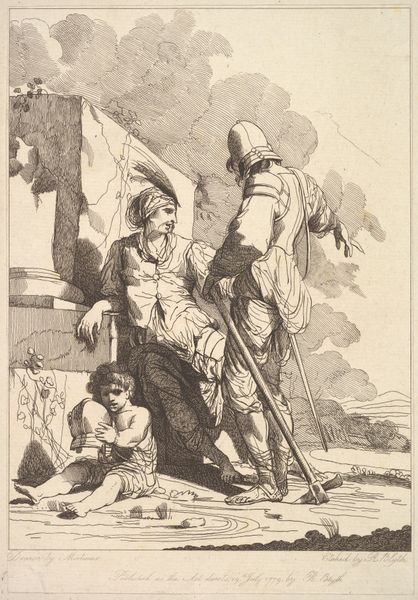
drawing, print, woodcut, engraving
#
drawing
#
medieval
#
narrative-art
# print
#
figuration
#
woodcut
#
history-painting
#
engraving
Dimensions: 164 mm (height) x 109 mm (width) (bladmaal)
Curator: Andreas Flinch created this intriguing engraving and woodcut hybrid, titled "Uglspil ved galgen," dating back to 1841. The State Museum of Art holds this powerful narrative piece in its collection. Editor: The overall impression is somber, almost chilling. The stark contrast of light and shadow heightens the drama unfolding. It gives a strong sense of foreboding. Curator: Indeed, considering the work emerges during a period when national romanticism in Denmark overlapped with anxieties regarding class and societal structures, it's essential to decode this image. What narratives were condoned or erased through images like these? How does power manifest itself in the composition? The expressions, especially of the man at the center are so very carefully crafted, giving me pause to question what may not be shown in plain sight. Editor: The gallows are central. The artist masterfully uses it as an axis that brings focus to the visual language: look at how the placement emphasizes the gravity of justice. One immediately associates the figure climbing the ladder, and his proximity to the gallows, with impending fate. Curator: Absolutely. Moreover, let's consider the broader implications. Medievalism as a movement tended to romanticize and idealize aspects of medieval history. Was it done through the artwork itself? Does it gloss over the harsh realities? By confronting this romanticized notion and positioning it critically, we reveal contemporary societal issues and power dynamics as depicted, or masked, within the piece. Editor: Symbolism is layered throughout. I find the monk near the central figure especially arresting – what meanings can we attach to such religious figures appearing at sites of execution? The cluster of figures near the condemned appears like harbingers of fate. Curator: Your point is key. Analyzing each character becomes crucial: who holds the visual power and control? Flinch appears to interrogate, maybe even subtly disrupt, established narratives. By doing so, the engraving transcends mere historical documentation and emerges as a powerful commentary on justice and power. It is interesting how artworks, across eras, converse with the now. Editor: It's true. Contemplating the meanings inherent in “Uglspil ved galgen” urges us to contemplate symbols and hidden cultural truths that inform visual representations of not only the medieval period, but also contemporary constructions of truth.
Comments
No comments
Be the first to comment and join the conversation on the ultimate creative platform.

